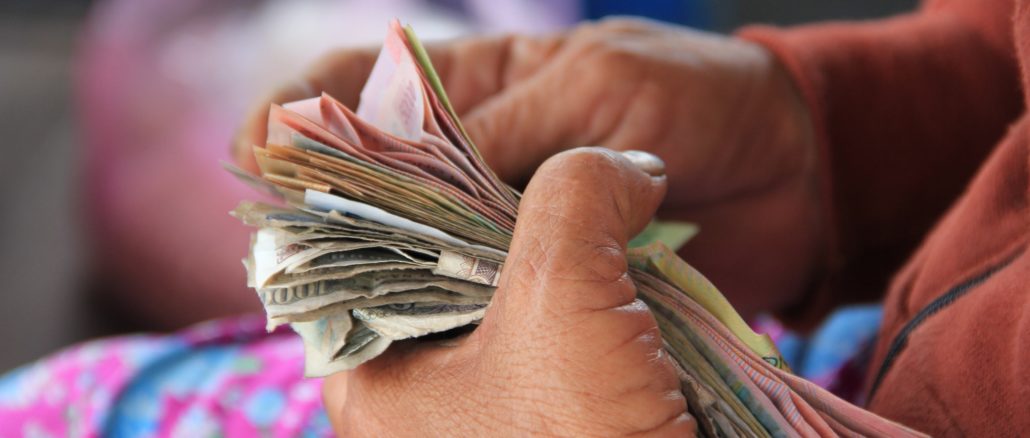
Melissa Browne, CEO of The Money Barre financial planning firm and CEO of award-winning accounting and advisory firm A&TA, has five simple, achievable ways to save at least $250 every month.
Firstly, the answer to that age-old question of, “How much we should be saving each pay?” Melissa says a minimum of 10 per cent, more if expenses allow. The best motivation to achieve this, according to Melissa, is rather than focusing on an amount to save, ask the question, “What do I want to save for?” and put your efforts towards that goal.
1. Get conscious of unconscious purchases
Being aware of where your money is going can reveal areas you could be saving. We are all partial to an açaí smoothie, flashy new threads, and a takeaway coffee multiple times a day, but it’s time to rethink how necessary these unconscious purchases are. Spending $4.50 each work day on coffee makes up over $1,000 a year – that’s a return trip to Thailand. Being conscious with your finances also means not being lazy: if your intention is to pack lunch and not buy it, then do so. If you have no intention of going to the gym, then cancel or reduce that membership.
2. Get a savings card that’s not linked to your debit card
“Generally, the biggest saboteur to our savings goals are us. That’s because often we behave like kids in a candy store and raid our savings whenever something bright and shiny comes along,” says Melissa.
This seems like common sense, yet many of us still rely on manually paying all of our expenses and putting aside savings. Automating income is beneficial not only to pay bills and expenses, but to also put aside for savings. Melissa recommends putting savings into an account not linked to your debit card to avoid giving yourself the power to make those unnecessary purchases.
3. Compare rates and utilities on the regular
There are a lot of finances we can automate. Though, beforehand, it is important to research these expenses. Chances are we are all paying more for things we don’t need to be, such as when was the last time you researched and compared things like insurance, mortgage interest rates, your phone bill or utilities? Use websites like iSelect, Compare The Market, or Choice and talk to your friends and peers. After all, talking about our finances shouldn’t be taboo.
4. Don’t underestimate money apps
With smartphones well and truly glued to our hands, finance apps are a no-brainer. If your bank provider has an app, download it; it is the quickest snapshot of what you have available and how many purchases you are making. There are some great apps to monitor your outgoings, such as TrackMySPEND, TrackMyGOALS, or Money Brilliant.
Splitwise is a free app to track shared bills and expenses; great if you live with others and want to ensure everyone pays their share and are paid back any IOUs. Acorns automatically invests your spare change from everyday purchases to investment in the stock market.
5. Abandon the budget altogether and try this seven-step process
“The biggest mistake most people make with budgeting is to budget,” says Melissa. “That’s because when we complete a budget, we generally include all the many things we might, maybe, one day spend our money on and – no surprise! – quickly realise there’s very little money left over.”
Instead, Melissa advises a seven-step process:
1. Figure out your money values and your relationship with money.
2. Figure out what you want to work towards, whether that be firm financial goals or inspiration.
3. Figure out how much you need for Step 1 and when you need it by.
4. Break Step 2 into a weekly, fortnightly or monthly amount, e.g. $10,000/26 = $384.62 per fortnight saved.
5. Work out your fixed expenses, such as your rent/mortgage, loan repayments, school fees, insurance, utilities. Break them up into a weekly, fortnightly or monthly amount as per Step 4. For example, if this is an annual amount of $50,000, then $50000/26 = $1923.08 per month.
6. Deduct Steps 4 and 5 from your regular income. That’s how much you have left to spend.
7. If 6 isn’t enough to live on, then you need to figure out how to earn more money, reduce some of your fixed expenses, or decide if your savings goal is worth it and then automate the whole lot.
Melissa’s new book, Unf*ck your Finances, will be available in January 2018, teaching us how to understand our good and bad money habits, develop financial resilience, and finally embrace financial wellness.
Originally appeared on Collective Hub
SheSociety is a site for the women of Australia to share our stories, our experiences, shared learnings and opportunities to connect.

Leave a Reply